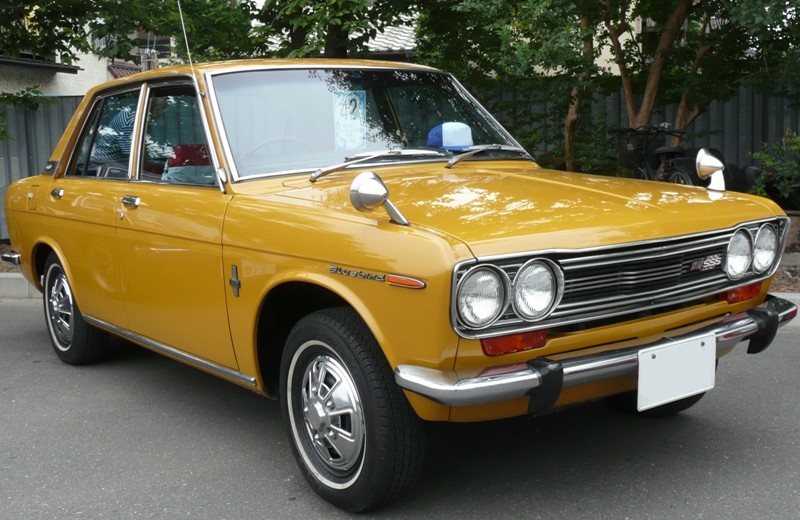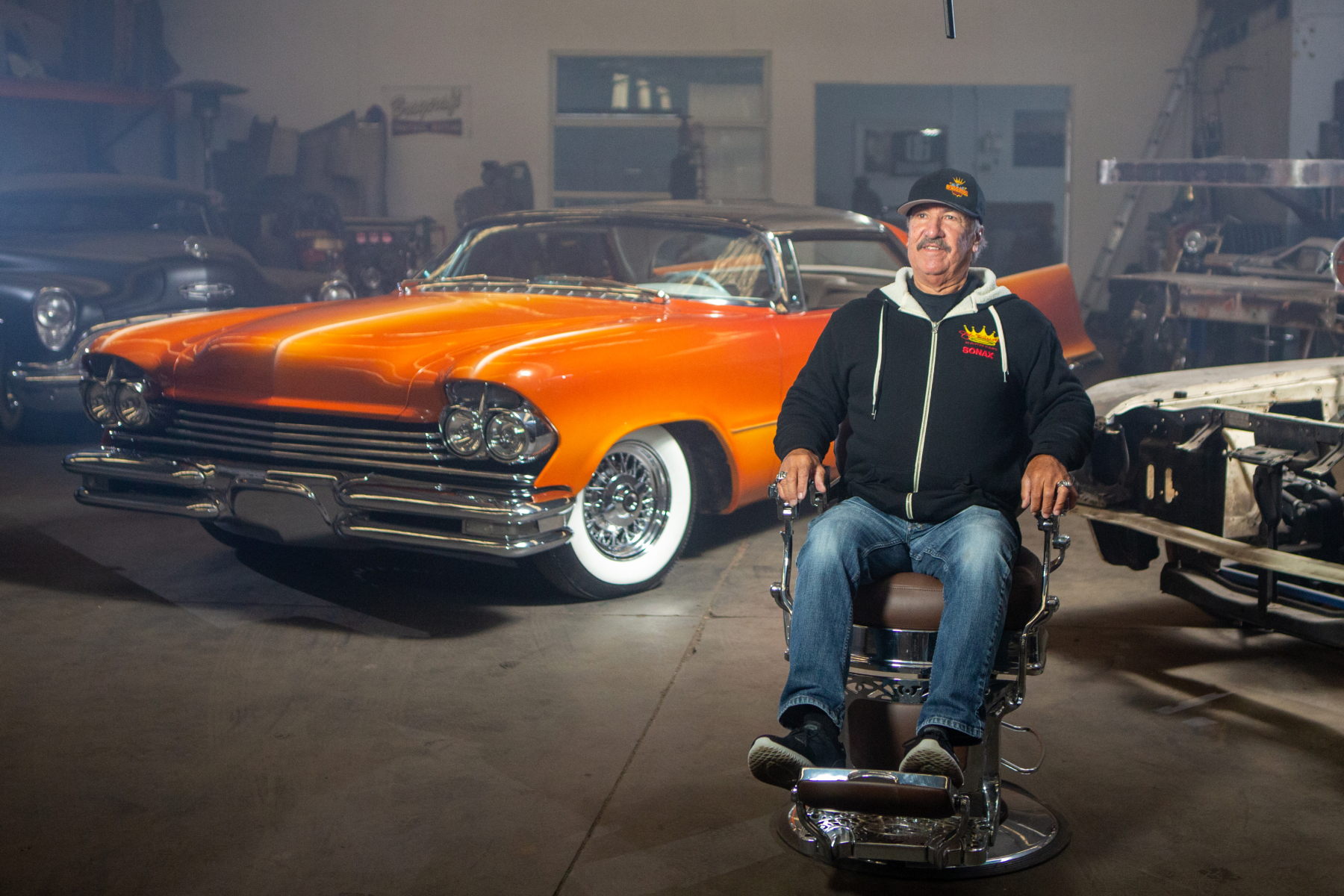

Nissan is one of Japan’s oldest car manufacturers, dating back past the 1930s which is when the company began building local versions of the British Austin Seven.
Its Datsun branded cars remained for 30 years a bastion of conservative design but then the 1960s arrived and Nissan discovered ways to deliver enjoyment – even excitement – via a range of open-top roadsters, attractive coupes and six-cylinder performance sedans.
However, it was one of the company’s more conservative designs that would build its reputation in the rugged arena of rallying.
The Datsun P510 – aka 1600/Bluebird – was a chunky four-door sedan with a 1.6-litre overhead camshaft engine, disc front brakes and independent rear suspension. Early ones had windscreen wipers mounted towards the outer edges of the ‘screen – the famed ‘clap hands’ wiper pattern – and a small, rectangular grille badge.
Those cars were geared to exceed 160km/h and on debut at the 1968 Bathurst 500 they filled seven of the top eight places in Class B. That level of dominance continued until 1971 when the class structure was changed, but even then, a lone 1600 at the 1972 Bathurst event managed to beat the technically superior Mazda RX2s.
1970 had been a great year for rally-spec 1600s, with a SSS version driven by Edgar Hermann winning the tough East African Safari rally. Then Hermann crossed the Indian Ocean to run a similar car in Australia’s Ampol Trial and finish as joint winner alongside a Citroen.
Australian Rally Championship events saw 1600s always in contention but rarely victorious against the more powerful XU-1 Toranas, 240Z Datsuns and Twin-Cam Ford Escorts.
That imbalance changed during the early 1980s though, when adoption of Group G rally regulations allowed significant modifications to ARC cars and the rise of ‘Grunter’ 1600s with 2.4-litre engines and up to 200kW.
Once Nissan Australia folded its works team of Stanzas that had won three National rally titles, lead Nissan drivers Ross Dunkerton and Geoff Portman built themselves 1600s and would add another title each to their ARC tallies.
The Datsuns and other cars of the Group G era could easily reach 190km/h on narrow forest roads. As had occurred with Group B in World Rally events, that pace also created safety concerns and 1985 saw rules changed again to limit engine output.
That still didn’t stop people at all arenas of rally competition running ‘Dattos’ and top drivers still achieving success at the highest level. This was demonstrated during the 1986 Bega Valley round of the ARC when locals David Eadie and Ron McKinnon, both in 1600s, headed a field of more modern and sophisticated Production Rally Cars.
Just as life in the competition fast lane was ending for the 1600 though, it was about to begin for another iconic Nissan product.
Ever since acquiring the ailing Prince Motor Corporation and its GTA Skyline design, Nissan would every few years announce a new GT-R variation. These cars came with attention-grabbing body kits, performance engines and invariably were rear-wheel drive.
That doctrine changed in 1989 when Nissan revealed its R32 Skyline GT-R – undoubtedly the most advanced and potent Japanese sports coupe of its time.
The 2.6-litre, six-cylinder engine was bolstered by twin Garrett T03 turbochargers and delivered a notional 206kW of power. This was the maximum permissible under an agreement between Japanese manufacturers when advertising engine output and considerably less than the actual figure of around 248kW.
Late in 1989, Nissan announced an Evolution version of the R32 GT-R; 500 cars intended for competition use with more power, less weight and improved aerodynamics. An additional 60 cars were to be offered only to accredited racing drivers for competition use.
All-Wheel Drive was standard and crucial to the GT-R’s success, both as a road car and on the race circuit. Unlike the Ford Sierra turbo, which with rear-wheel drive was hard to control when the engine was at full boost, the GT-R’s sensors would detect loss of traction at the rear and send surplus torque to the front wheels.
Nissan Australia imported just 100 of the R32 Skyline for retail sale but they failed to excite the market at all and some cars took 18 months to sell. Today, perversely, survivors from that Australian complied batch will sell for up to $150,000 – or considerably more than the original $110,000 list price.
Far more costly were Group A versions of the GT-R, which contested the Australian Touring Car Championship from 1990-92, winning the title three times and the Bathurst 1000 twice.
Following the second win at Bathurst, local Touring Car regulations were changed to exclude technically advanced designs and ensure after 1992 that only rear-wheel drive V8s like the local Holden Commodore and Ford Falcon could win.
A year later in Japan and also after several years of GT-R dominance, race authorities adopted a European Super Tourer formula; effectively excluding the Nissan that had come to be known as ‘Godzilla’.
More than 40,000 R32 GT-Rs were produced for public sale between 1989 and 1994, with most going to buyers in the Japanese Domestic Market.
Australia since the mid-1990s has become home to numerous JDM cars, but growing numbers have also headed to the USA. There, once a car is 25 years old and deemed ‘classic’, it can be registered without any compliance issues or need for conversion to left-hand drive.
What this demand for R32s has done is stimulate interest in a variety of older, ex-Japanese vehicles and competition for excellent cars has influenced prices achieved at Japanese auctions.
If you bought a GT-R some years back and haven’t had it revalued, that might be wise because replacement costs are climbing.
Many Enthusiast Insurance clients do own Nissan GT-Rs and others will have Datsun 1600s. These cars can be in authentic condition or modified, it doesn’t matter.
Enthusiast accepts vehicles with all manner of permitted modification while rewarding owners who travel limited distances in their special Nissan or other brand.
Enthusiast Insurance is available online and 24 hours per day, every day and takes just a few minutes to complete. Simply log into www.enthusiast.com.au and select Quick Quote.

